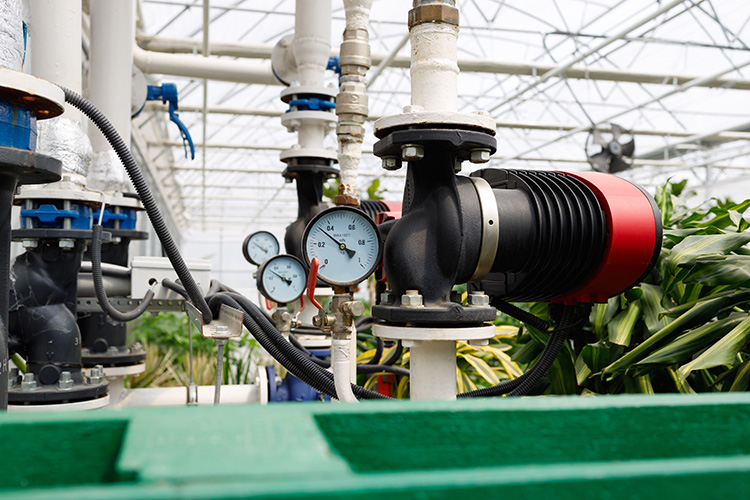
The main reason why people invest in submersible pumps is to lift water deeper than the suction limits that come with pumps. The limit of a surface pump is the depth where the surface pump can’t lift water. This is usually a depth of 20 feet or 7 meters at sea level. The number goes down further for sites at elevation.
Many water sources tend to have greater depths than the suction limits of surface pumps and this is why it is important to invest in a submersible pump.
You need a submersible solution to get water that is deep underground.
There are many advantages you can expect when you use a submersible solution. Below are some of them.
You never have to prime a submersible pump because it is always submerged in water. There is no risk of the pump drawing in air from small leaks in joints or pipes which can result in the pump being inefficient.
No noise, water, or air pollution. A submersible pump is underground and this means they are quiet. They can’t contaminate the water source because they don’t require oiling, greasing, or refuelling.
Submersible pumps are versatile. You can use the pump to pump water for domestic water lifting, agricultural irrigation, community water access, and more.
Choosing a submersible pump
There are some things you need to consider when you are looking for a submersible pump:
- How far below is the water?
- How high do you want to lift water?
- What is the pumping lift (this is the depth of the water from the ground added to the height from the ground to the tank above ground)?
- How much water do you need daily?
- How is the pump going to be powered?
- Does the water have particulates or is it always clean?
- Is your pump for agricultural, domestic, or another use?
The above questions are some that the dealer will be interested in so they can help you choose the best option for you. You will notice that the submersible pump datasheets have complex depth graphs or complex flowrate, so you should be clear on what you need from the solution before you look at a given pump.
How different types of submersible pumps work
Once you talk to a pump dealer about your requirements, they are going to suggest a couple of options. Below are some of the most popular options in the market and details on how they work.
Centrifugal submersible pumps
This pump has an impeller (this is similar to a fan or propeller) inside the sealed pump unit and it pushes up water using rotational energy. When the impeller spins, it increases the velocity and pressure of the water, and this directs it towards the outlet.
Helical rotor pumps
They have a rotating “screw” that drives water out of the well. This is a positive displacement pump and it moves water by enclosing a fixed volume of it and moving it.
Air-lift pump
This pump works by mixing water with compressed air. The air is pumped down the water source where it mixes with water. When the air tries to escape from the well, it brings water with it and comes up to the surface.
Deep well jet pumps
This pump uses a surface pump to pump water down the water source. This water is pumped at high pressure. The pump comes with a converging nozzle at the bottom that is going to convert the water that is high-pressure and it becomes high-velocity water. The water jet gets ducted to the rising pipe, and it will pull the surrounding water up with it.
Submersible hydraulic ram pumps
These are also powered using a surface pump. The ram pump will convert both the water flow and output head from the surface pump to lift water to the surface along with the water pumped down by the surface pump. the original water goes back to the surface pump to be recirculated as the additional water fills the tank.
related post

Leave a Reply